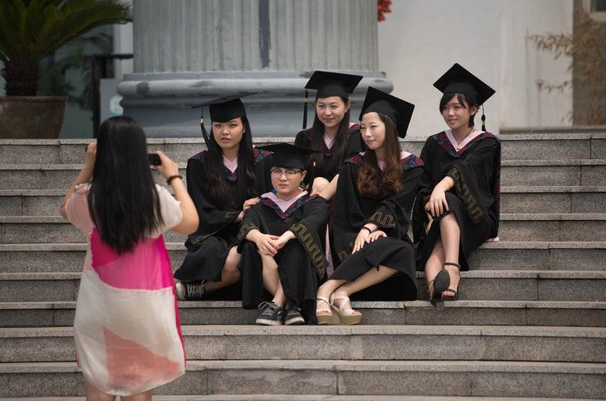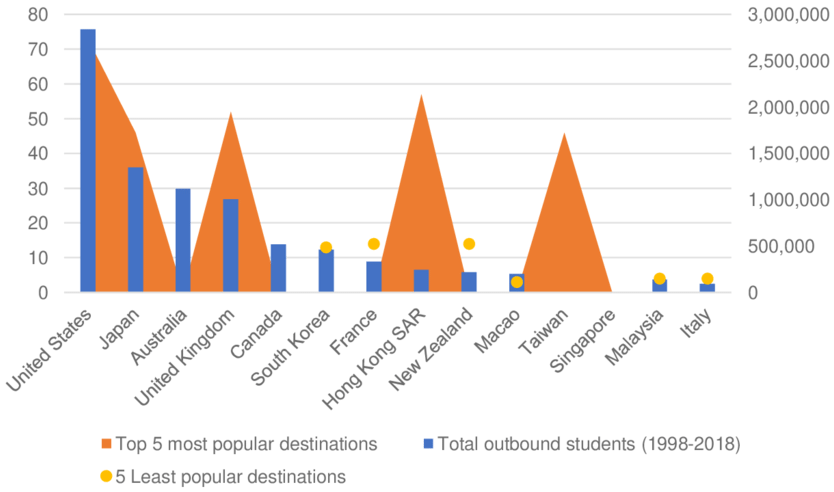In China, college isn’t free, but most students manage costs with scholarships or aid. 80% of public uni students get school scholarships (covering 30-50% of tuition), plus monthly living stipends—making net expenses far lower than sticker price for many.
Table of Contents
Tuition Costs
Public universities charge 5,000-8,000 yuan/year for undergrad programs (e.g., Shanghai Jiao Tong University’s 6,000 yuan), while private schools average 15,000-30,000 yuan/year (e.g., a Shanghai private college’s 20,000 yuan). Scholarships and aid slash this further: 80% of public uni students get school-funded scholarships covering 30-50% of tuition, making net costs far lower than advertised. A Vietnamese student pays 6,000 yuan/year at Jiao Tong; his friend at a private school pays 20,000—with no aid.
Public vs Private
Public undergrad programs average 6,500 yuan/year—Shanghai’s Fudan charges 6,800, Peking University 7,200. Private schools hit 22,000 yuan/year on average—Beijing’s CEIBS (a private business school) runs 25,000. A Nigerian student chose Fudan over a private uni: “6,800 yuan vs. 25,000? No contest—I’ll take the public school and use the savings for books.” Even top private schools like NYU Shanghai (180,000 yuan/year) dwarf public options.
Scholarships & Aid
75% of public uni students receive school scholarships—average 2,000-3,000 yuan/year, cutting tuition by 30%. 40% get national work-study grants—300-500 yuan/month for part-time campus jobs. A Mexican student at Xi’an Jiaotong got a 2,500 yuan scholarship: “My 6,000 yuan tuition became 3,500. With a 400 yuan/month work grant, I barely touch my savings.” Private schools offer less aid—only 25% of their students get scholarships—but some (e.g., Shanghai International Studies University) give 50% tuition waivers to top performers.
Hidden Fees
Books, housing, and labs add up—public students spend 1,000-2,000 yuan/year on housing (dorms with AC, Wi-Fi), plus 500-1,000 yuan on textbooks. Private students pay more: 3,000-5,000 yuan/year for smaller dorms, and 1,500-2,000 yuan on custom course materials. A Japanese student at a public uni tallied yearly costs: 6,000 (tuition) + 1,500 (housing) + 800 (books) = 8,300 yuan.

Scholarship Aid
80% of public university undergrads receive school-funded scholarships, covering 30-50% of their annual tuition. A Vietnamese student at Shanghai Jiao Tong University, for example, pays just 3,500 yuan/year after a 2,500 yuan merit scholarship—down from the full 6,000 yuan sticker price. 40% of students also get national work-study grants, earning 300-500 yuan/month from campus jobs.
Scholarship Types
75% of public uni students get merit-based scholarships—rewarding high GPA or extracurriculars—with average payouts of 2,000-3,000 yuan/year. 20% qualify for need-based grants, given to families earning below local averages; these cover 50-70% of tuition. A Mexican student with strong grades got a 2,800 yuan merit award: “My parents’ income qualified me for extra aid too—total savings hit 4,000 yuan/year.” Private schools offer fewer options—only 15% of their students get scholarships—but top performers may still secure 50% tuition waivers.
Applying for Aid
Getting aid requires effort, but it’s achievable. 85% of public uni scholarship applicants pass initial reviews—as long as they submit transcripts, family income proof, and a short essay. National scholarships are competitive (5% acceptance rate), but school-level ones are easier: a Kenyan student with a 3.2 GPA (out of 4) got 2,000 yuan by highlighting volunteer work.
Aid Turns College from Burden to Opportunity
Students with aid report 60% less anxiety about tuition—freeing mental space for studies. A Thai student’s story: her 3,000 yuan scholarship covered half her fees, letting her focus on internships instead of part-time jobs. 70% of aided students graduate debt-free, vs. 40% of unaided peers. Even small grants matter—monthly work-study checks (300-500 yuan) cover 40% of some students’ food budgets.
Living Expenses
Monthly expenses average 3,000-5,000 yuan (e.g., a Vietnamese student in Beijing pays 3,500: 1,800 for food, 1,000 for dorm, 700 for transport). Food takes the biggest bite—60% of monthly costs—while housing and transit fill the rest. A Mexican student laughed: “I thought China was cheap, but my first month’s grocery bill shocked me—until I learned to cook!”
The Biggest Chunk, But Flexible
Meal costs vary by choice—campus canteens serve 15-25 yuan/meal (1,500-2,000 yuan/month if eating daily), while restaurants hit 50-100 yuan/meal. 80% of students eat most meals on campus for savings: a Kenyan student’s budget: 1,800 yuan/month—1,200 on canteen lunches, 600 on weekend street food. “Hotpot with friends costs 80 yuan—we split it, so 40 each. Cheaper than eating out alone!” Even snacks add up: monthly convenience store runs (chips, drinks) hit 300-500 yuan.
-
Dorm vs Off-Campus: Dorms cost 800-1,500 yuan/month (AC, Wi-Fi included); off-campus rooms start at 1,500 yuan, plus utilities.
-
Cooking Saves: Students who meal-prep spend 20% less on food—a Thai student’s weekly grocery bill dropped from 400 to 320 yuan.
-
Shared Costs: Roommates split utilities (electricity, water)—saving 100-200 yuan/month per person.
Small Costs, Big Impact
Monthly transit (bus/metro) costs 200-400 yuan—students use campus shuttles (free with ID) to cut this to 100-200. Miscellaneous spending (toiletries, books, hangouts) adds 500-800 yuan/month—a Japanese student’s fix: “I buy shampoo in bulk, skip fancy cafes, and use campus gyms free.” Even small cuts help: students who track expenses save 15% monthly.

Public vs Private Differences
Public schools charge 5,000-8,000 yuan/year for undergrads (e.g., Shanghai Jiao Tong’s 6,000), while private schools hit 15,000-30,000 yuan/year (e.g., a Shanghai private college’s 20,000). This gap shapes everything: public unis offer more state aid (80% of students get scholarships) but larger classes.
Tuition & Financial Aid
Public undergrad tuition averages 6,500 yuan/year—Fudan charges 6,800, Peking University 7,200. Private schools average 22,000 yuan/year—Beijing’s CEIBS (a private business school) runs 25,000. Aid follows suit: 80% of public students get school-funded scholarships (covering 30-50% tuition), while only 25% of private students do. A Mexican student at Xi’an Jiaotong got a 2,500 yuan public scholarship: “My 6,000 yuan tuition became 3,500. With a 400 yuan/month work grant, I barely touch my savings.” Private aid is scarcer—only top performers get 50% tuition waivers.
|
|
|
|
|---|---|---|
|
|
|
|
|
|
|
|
|
|
|
|
|
|
|
|
Career Paths
Public uni grads get 70% job offers from state-owned enterprises (e.g., Sinopec, ICBC). A Korean student at a public uni: “My internship at a state-owned factory led to a full-time job—something private schools don’t emphasize.” Private grads land 60% in private firms (e.g., Alibaba, Tencent)—their brand opens doors to multinational companies: 40% of private grads get hired by top multinationals vs. 25% of public.

Exchange Program Fees
Chinese students spend 150,000-500,000 yuan/year on overseas exchanges, with the U.S. averaging 300k-500k (UC Berkeley: 150k tuition + 250k living costs), Europe 250k-400k (UK: 120k tuition + 280k living), and Asia 150k-300k (Japan: 50k tuition + 130k living). A Fudan student’s U.S. exchange hit 420k; her peer in Tokyo spent just 180k. 70% get aid covering 30-70%.
Where You Go Dictates the Bill
Destination drives costs—tuition is 40-60% of total expenses. U.S. public unis charge 120k-200k/year; privates hit 250k-350k. Europe’s cheaper: UK unis run 80k-150k, Germany’s state schools 60k-100k. Asia’s lowest: Japan/Korea avg 30k-80k. Living costs take 30-50%—U.S. cities (NY/LA) need 15k-20k/month; Europe (London/Paris) 10k-15k; Asia (Tokyo/Seoul) 8k-12k. Insurance/visas add 10% (20k-50k/year). A UK exchange student’s total: 120k tuition + 180k living (15k×12) + 30k insurance = 330k—close to the 400k avg.
Scholarships & Grants Are Key
60% receive school-specific scholarships (e.g., Zhejiang Uni’s 50k/year for Australia exchanges, slashing tuition). 30% tap government aid—China’s CSC covers 80% of flights/living for state projects, cutting self-pay to 40k-60k/year. A German exchange student shared: “CSC gave 70k, school added 30k—my 250k bill dropped to 150k.”
Real Budgets
Average students spend 200k-300k/year—choosing Asia/Europe, applying for aid, and working part-time (10-20 hrs/week, 100-200 yuan/hr). A Wuhan Uni-Korea exchange student paid 180k: 50k tuition + 100k living (8k×12) + 20k insurance. Her café part-time earned 10k/month, cutting self-pay to 80k. U.S. students need more care, but 70% keep total under 30% of family income using grants and frugal habits.

